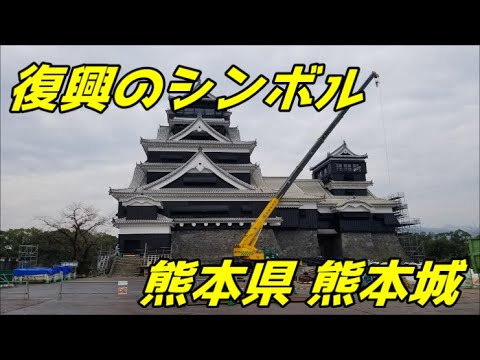Kumamoto Castle is a Japanese castle built from the Azuchi-Momoyama period to the Edo period in Kumamoto, Akita-gun, Higo Province (currently Chuo-ku, Kumamoto City, Kumamoto Prefecture).Also known as “Ginkgo Castle”.
Kiyomasa Kato took in the medieval castle and rebuilt it. After the reform of Mr. Kato, it was the residence of the Hosokawa clan of the Kumamoto domain until the end of the Edo period.It became the battlefield of the Satsuma Rebellion in the Meiji era.Immediately before the Satsuma Rebellion, the buildings of the main enclosure such as the large and small castle towers and the palace were burned down, but the turrets, castle gates, and walls such as the Uto turret still exist, and 13 buildings (11 turrets, 1 gate, 1 wall) are in the country.It is designated as an important cultural property of.In addition, the castle ruins are designated as a national special historic site as “Kumamoto Castle Ruins”.
Hirayama Castle was built in the Chausan hills, at the tip of the tongue-shaped plateau (Kyomachi plateau) extending south from the center of Uekimachi, Kita-ku, Kumamoto. The current place names correspond to Honmaru, Ninomaru, Miyauchi, Kojo, Furukyomachi, and Chibajomachi in Chuo Ward.
Chiba Castle and Kumamoto Castle were built in the Middle Ages, and Kiyomasa Kato took in this from the end of the Azuchi-Momoyama period to the beginning of the Edo period, and built the part that corresponds to the current main enclosure. In the time of Mr. Hosokawa, the castle area was actively expanded and expanded, and Ninomaru and Sannomaru were added to the west. Until the beginning of the Meiji era, most of the buildings remained without being removed, but after the Kumamoto Garrison was placed, the buildings, stone walls, and Kuruwa were removed and modified, leaving some buildings in the Satsuma Rebellion. Major buildings such as the palace and turret, including the castle tower, were burned down. Currently, the Uto turret and the turret group of Higashi Takenomaru remain (see the history of the same section (after the Meiji era) for the details of the loss of the building). Although a part of the stone wall collapsed due to the Kumamoto earthquake of 1889 (Meiji 22) and there was a part that was repaired, it almost remained in the Edo period, and the castle ruins are designated as a special historic site (512,300.52 as of 2012). Square meter).
The castle tower was restored in 1960 with reinforced concrete, and the interior is the “Kumamoto City Kumamoto Museum Annex”. After 2000, the gates, turrets, and palace were restored with wooden structures.
Many stone walls collapsed during the Kumamoto earthquakes in April 2016, and cultural property buildings such as the Uto turret and restored buildings such as large and small castle towers were damaged and are being restored (see “History and History”). ).
It is also known as a famous place for cherry blossoms, and has been selected as one of Japan’s Top 100 Cherry Blossom Spots.
#熊本県
#熊本城
#日本の城


AloJapan.com